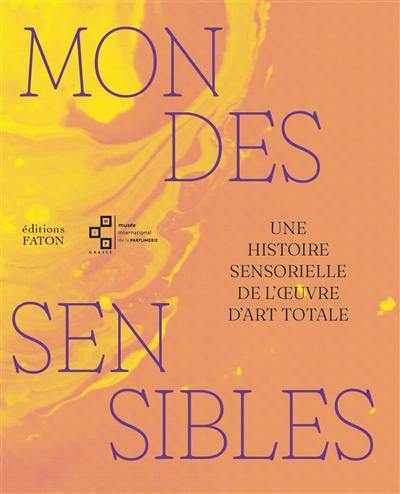
Fiche technique
Format : Broché
Nb de pages : 175 pages
Poids : 862 g
Dimensions : 23cm X 27cm
ISBN : 978-2-87844-371-4
EAN : 9782878443714
Mondes sensibles
une histoire sensorielle de l'oeuvre d'art totale
Quatrième de couverture
Pensé par Philipp Otto Runge à l'aube du XIXe siècle et popularisé par Richard Wagner dans les années 1850, le concept d'art total (ou Gesamtkunstwerk) consiste à proposer une expérience réunissant les arts, mais aussi, comme plusieurs artistes l'ont envisagé, à interpeller l'ensemble du corps dans l'expérience artistique. Au cours de ses recherches sur l'olfaction, la théoricienne Sandra Barré observe une forme de retour à ce concept dans la création contemporaine. C'est ainsi que trois artistes français, Tiphaine Calmettes, Camille Correas et Florian Mermin, investissent le Musée International de la Parfumerie de Grasse pour proposer des expériences in situ où se mêlent vision, ouïe, olfaction, goût et toucher.
En outre, l'exemple de sept oeuvres polysensorielles permet de considérer la présence de ces sensorialités tout au long de l'histoire de l'art total : les Métachories de Valentine de Saint-Point (1913), les études pour Le Mystère (1903-1915) d'Alexandre Scriabine et, pour la seconde partie du XXe siècle, les oeuvres de Carolee Schneemann, de Lygia Clark, de Bill Viola, de Joseph Beuys et de Jean-Pierre Bertrand. Ces extraits d'histoire sont décrits par archives, habituellement disponibles par le prisme de la vue (protocoles, témoignages écrits, esquisses, recherches de l'artiste, articles de presse, photographies) ou, plus récemment, par celui de l'ouïe (vidéos, enregistrements sonores et archives radiophoniques majoritairement). Ici, l'odeur entre enjeu pour tenter, par reconstruction olfactive ou usage de matériaux odorants, d'ajouter une dimension sensorielle à l'archive et poser la question de ce que l'art envisage comme matière scientifique.
Des réflexions sont ainsi ouvertes sur de nouveaux moyens de conservation et sur la manière dont s'écrit l'histoire, et, a fortiori, celle de l'art.
Worlds of the senses
A sensory history
Of the total work of art
Conceived by Philipp Otto Runge at the dawn of the 19th century and popularised by Richard Wagner in the 1850s, the concept of the total work of art (or Gesamtkunstwerk) consists of an experience that brings together the arts, but also of involving the whole body in the artistic experience, as several artists have imagined. In the course of her research into olfaction, theorist Sandra Barré has observed a return to this concept in contemporary art. Three French artists, Tiphaine Calmettes, Camille Correas and Florian Mermin, have taken over the Musée International de la Parfumerie in Grasse, offering in situ experiences that combine vision, hearing, smell, taste and touch.
In addition, seven polysensory works will enable us to consider the presence of the sensorial throughout the history of total art works : Valentine de Saint-Point's Métachories (1913), Alexander Scriabin's studies for Mysterium (1903-1915) and, in the second half of the 20th century, works by Carolee Schneemann, Lygia Clark, Bill Viola, Joseph Beuys and Jean-Pierre Bertrand. These extracts from history are described through archives, usually available through the sight (protocols, written testimonies, sketches, the artist's research, press articles, photographs) or, more recently, through hearing (mainly videos, sound recordings and radio archives). Here, odour comes into play in an attempt, through olfactory reconstruction and the use of scented materials, to add a sensory dimension to the archive and raise the question of what art imagines as scientific material.
New avenues for conservation are being explored, as well as the way in which history - and even more so the history of art - is written.





